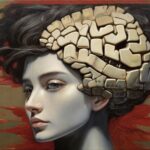
Art has played a vital role in human culture across centuries, showcasing various styles and techniques during different historical periods.
Among these, the Renaissance and the Medieval era stand out as two profoundly significant epochs in art history.
In this discussion, we will delve into the distinctions between Renaissance art and Medieval art, covering aspects such as subject matter, artistic techniques, ideals, similarities, overlap, and their enduring legacy and impact.
Exploring the Differences: renaissance vs medieval art
Subject matter
Medieval art predominantly revolved around religious themes, with a strong emphasis on Christian iconography.
Iconic representations like the Madonna and Child, the Crucifixion, and the Last Judgment were prevalent.
In contrast, Renaissance art showcased a broadened spectrum, encompassing not only religious subjects but also secular themes.
The Renaissance era introduced a shift towards portraying portraits, landscapes, and still life alongside traditional religious motifs.
- Read also: Top 7 Great Renaissance Artists
- Read also: Unraveling the Medieval Era Timeline
Artistic techniques
The techniques employed in Medieval art were distinctive, characterized by flat and stylized figures.
Attention to perspective and realism took a back seat, while the use of gold leaf and vibrant colors prevailed.
Figures were often symbolic or allegorical in their representation.
On the flip side, Renaissance art marked a departure from this stylized approach.
It embraced realism, with meticulous attention to proportion, perspective, and light.
Techniques like chiaroscuro, sfumato, and linear perspective were harnessed to breathe life into the canvas, creating a profound sense of depth and realism.
Artistic ideals
Medieval art had a clear religious purpose, aiming to inspire devotion and piety in the viewer.
Figures were often depicted in a stylized and idealized manner, emphasizing their spiritual significance.
Renaissance art, in contrast, celebrated human achievement, spotlighting the individual and the wonders of the natural world.
Artists of the Renaissance sought to capture the intricate beauty of the human form and the complexities of the natural environment, reflecting a profound appreciation for both.
Overview key differences
| Aspect | Renaissance Art | Medieval Art |
| Time Period | 14th to 17th century |
5th to 15th century
|
| Style and Subject | Emphasis on realism and secular themes |
Predominantly religious with stylized figures
|
| Perspective/Realism | Strong focus on perspective and realism |
Flat, stylized figures, little emphasis on realism
|
| Techniques/Materials | Utilization of chiaroscuro, sfumato, linear perspective, oil paints |
Use of gold leaf, bright colors, symbolic/allegorical figures
|
| Patronage | Shift towards secular patrons, including wealthy individuals and families |
Primarily sponsored by the Church and religious institutions
|
| Cultural Context | Marked by a revival of classical knowledge, humanism, and a celebration of individual achievement |
Centered around religious beliefs, monastic life, and feudal systems
|

Similarities and Overlap
While there are significant differences between Renaissance art and Medieval art, there are also some similarities and overlap.
Here are some examples:
Religious themes
Both Renaissance and Medieval art were interested in religious subjects, although the Renaissance also began to explore secular themes.
Both periods saw an increased interest in the depiction of religious figures and events.
Figurative art
Both Medieval and Renaissance art are figurative in nature, depicting things that have human-like or animal-like forms.
This is quite different from abstract art, which does not represent recognizable objects.
Illuminated manuscripts
Both periods produced illuminated manuscripts, which were highly decorated books that often contained religious texts.
These manuscripts were often created by monks and nuns and were highly valued for their beauty and religious significance.
Influence of classical art
Both Renaissance and Medieval art were influenced by classical art, although the Renaissance was more directly inspired by the art of ancient Greece and Rome.
Medieval art was influenced by the art of the Byzantine Empire, which was itself influenced by classical art.
Use of gold leaf
Both periods used gold leaf in their artwork, although the Renaissance used it more sparingly.
Gold leaf was used to add a sense of richness and luxury to the artwork.

Legacy and Impact
The enduring influence of Renaissance art is profound, representing a pivotal turning point in artistic ideals and techniques that would shape the course of art for centuries.
The emphasis on realism, individualism, and the exploration of the natural world during the Renaissance laid the foundation for the emergence of diverse artistic styles and movements.
In stark contrast, the legacy of Medieval art predominantly resides in the realm of religion.
Its impact is evident in the continued utilization of Christian iconography within various art forms and architectural expressions.
- Read also: Exploring Medieval Era Facts and Beyond
- Read also: Medieval European Societies
Conclusion
Renaissance art and Medieval art represent distinct epochs in art history, showcasing notable variations in subject matter, artistic techniques, and ideals.
Despite some overlapping features, the impact and legacy of Renaissance art stand out prominently.
This period marked a transformative shift in artistic ideals and techniques, leaving a lasting influence that resonated through centuries of art evolution.


